Festivals
London Film Festival 2011:
The Sight & Sound blog
It’s a wrap: we tally our festival experiences
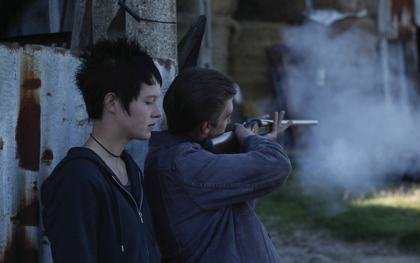
Hors Satan
S&S staff and writers, 3 November
Best new film discovery
Mar Diestro-Dópido
Bruno Dumont’s Hors Satan (Outside Satan). Not very keen on his last feature, Hadewijch, I approached this with caution, but soon surrendered to its capital-M Magic. Telling the story of a friendship between an emotionally damaged young woman, Her, and a middle-aged man, Him – the latter a figure straight out of Pasolini (think Theorem) who embodies both the goodness and cruelty of nature, and becomes a sort of fallen guardian angel to Her – the film is utterly mesmerising, mysterious and brutal, typical of this director’s highly idiosyncratic worldview.
And it’s elevated to the sublime by the outstanding cinematography of Dumont’s usual collaborator Yves Cape. Painterly panning shots show the characters engulfed by the grandeur of the northern French coastal landscape; they’re contrasted with close-ups on the typically marked features of the protagonists’ faces, at once uncanny and opaque yet almost see-through (as in Her’s pale skin).
Opening up to potentially limitless readings, Hors Satan is the embodiment of what film festivals do best: enable discovery and surprise.
James Bell
I was very impressed by Snowtown, the debut feature by Australian director Justin Kurzel, about the real-life ‘Bodies in barrels’ serial killings in Australia in the 1990s. There’s no question that it’s a troubling film, and at times very tough to watch, but I found it to be an entirely responsible one, and the sense of unease it imparts is in large part due to Kurzel’s brilliant control of tone, rather than any cheap excesses.
And Daniel Henshall’s incredible, frightening central performance deserves to see him break through like Eric Bana after Chopper or Russell Crowe after Romper Stomper. It will be interesting to see what he, and Kurzel, come up with next.
- Read James Bell’s interview with Justin Kurzel in the December 2011 issue of Sight & Sound
Jane Giles
With shades of Catfish and The Thin Blue Line, Carol Morley’s Dreams of a Life is one of those films that leaves audiences stunned, then talking about the film for weeks. Intimate, universal yet ultimately mysterious, in questioning how the death of a sociable young woman could go undiscovered for so long, the film makes us look around ourselves.
- Nick Bradshaw interviews Carol Morley in the forthcoming January 2012 issue of Sight & Sound and online
Nick Bradshaw
Snowtown and Dreams of a Life are two real-life mortality tales that got right under my skin, and break fascinating formal ground.
My other discovery – new to me – was Emile de Antonio’s 1964 Point of Order!, a tautly edited and gripping digest of the Army-McCarthy hearings of a decade earlier. Besides offering the spectacle of a rather off-kilter courtroom procedural, it slowly and subtly built as a record of a once-mighty bully meeting his nemesis, in the unlikely form of lawyers for the US Army. Democracy works occasionally in strange ways.
Geoff Andrew
Some of the best films in the festival I’d already seen in Cannes, and while I loved the delicacy of tone that distinguishes Alexander Payne’s The Descendants, because of Sideways that perhaps wasn’t so surprising.
But Darwin, a documentary made by Nick Brandestini about a small community in Death Valley, was a real find; though fairly conventional in terms of style, its unshowy humanity, which forestalls any freak-show aesthetics creeping into its portraits of genuinely eccentric people, is something to treasure.
Nick James
Justine Waddell in Target, a vivid presence in an unforgettable, dizzying, absurdist satire about unlimited desire.
Kieron Corless
Hands down Bruno Dumont’s Hors Satan. Probably his greatest film, it’s a brilliant distillation of his customary themes and preoccupations. It shows Dumont is world-class, right now at the top of his game.
Favourite film moment
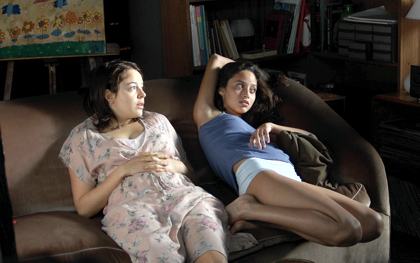
Back to Stay
Sophie Mayer
Mercedes Mumenthaler’s Back to Stay was my discovery of the festival – and my favourite moment was when the three grief stricken sisters listened to their grandmother’s vinyl of Bridget St John covering John Martyn’s ‘Back to Stay’ and the film’s English title made perfect, crystalline sense (having beforehand seemed a mysterious rendering of the original Abrir Puertas y Ventanas).
It still seems mysterious – the transmission of obscure English folk, including a Vashti Bunyan rarity, to Argentina – but a perfect mystery in keeping with the fairytale trope of three sisters.
Nick Bradshaw
Perhaps the deeply cuckoo outdoor kabuki tribute by an ex-pat Japanese couple living in Bulgaria to that country’s former king and now former president Simeon II, performed against a decidedly fake socialist-realist farm-scene backdrop, in Andrei Paounov’s bone-dry and beady-eyed documentary The Boy Who Was a King. The film constituted a litany of such deadpan encounters with motley Bulgarians, intercut with expertly assembled archive footage dating back to Simeon’s ascent to the throne at the age of six.
James Bell
I’ve already written about my encounters with Barbara Loden’s revived 1970 Wanda (1970) and Robert Parrish’s long-overlooked little crime / noir picture Cry Danger (1951).
As with the latter, you could also hear the audience struggling to commit to memory the best quips in the Surprise Film, Whit Stillman’s Damsels in Distress, which some felt was a controversial choice for the Surprise Film slot, but I for one loved. Where the likes of Juno feel cynically jaded in their arch, sassy young heroines, here there was genuine wit, warmth and humour, with Greta Gerwig the best of a great cast.
Too many lines to cite here, but special mention must be made for Megalyn Echikunwoke’s recurring dismissal of the film’s male characters as “playboy-operatOR types”, delivered with emphasis on the final syllable as though it were an elocution-lesson exercise.
Dylan Cave
I absolutely loved Ewan McNicol’s documentary short Missing, about pet detectives and animal telepathists operating in California. I found it a joy, though I’m not sure I should have been laughing so hard at the litany of failed searches and bumbling animal psychoanalysis. By the end McNicol shows that the animal rescuers have as much personal anguish invested in tracking down missing Mimi and Truffles as their distressed owners and, with that, my cynical superiority melted into a kind of respectful sympathy.
Davina Quinlivan
In Mathieu Amalric’s The Screen Illusion – an adaptation of Pierre Corneille’s seventeenth-century play transposed to Paris’s Hotel du Louvre – the female protagonist Isabelle (Suliane Brahim) is betrayed by everyone around her. She drags a set of golf clubs through a car park and sets about pulverising the sleek bonnet of a car belonging to her closest enemy.
We hear the original text of Isabelle’s soliloquy interspersed with screams of fury and the sharp reverberations of metal against metal – but the best moment comes when Isabelle removes a fire-safety axe from inside the golf case (stolen, we assume, from the hotel lobby). The wry humour of Corneille’s play is ghosted here, absurdity easily intermingling with the rapture of madness.
Mar Diestro-Dópido
A group of imperturbable and resilient ants determined to lift a piece of food about six times their size all the way up Ozu’s gravestone in José Luis Guerín’s Letter to Jonas Mekas in Correspondence. You could feel the acute concentration of everyone watching at the NFT3 – a unanimous gasp when they missed the top for the first time, and a palpable, even giggly relief when they finally made it.
Nick James
I could cite any one of maybe a dozen magnificent moments in Nuri Bilge Ceylan’s Once Upon a Time in Anatolia but I’ll leave that to my old pal Geoff Andrew.
Geoff Andrew
Two marvellous cramped-room scenes: the sudden appearance of the village elder’s astonishingly beautiful daughter (magical, mysterious and profoundly resonant) in Once Upon a Time in Anatolia (magical, mysterious) and the wonderfully subtle ethical debate about an erroneously awarded prize (hilarious, relevant and thought-provoking) in Joseph Cedar’s Footnote.
Jane Giles
I love almost every inch of This Must Be the Place (Paolo Sorrentino), but particularly the scene in which reclusive middle-aged goth star Cheyenne (Sean Penn) is pushing his trolley around an Irish supermarket in full make-up and platform boots to the amusement of local shoppers.
Favourite off-screen moment
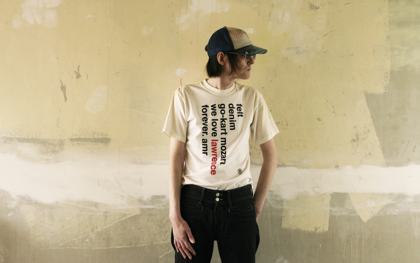
Lawrence of Belgravia
Jane Giles
Talking of middle-aged popstars, the appearance of Lawrence (of Belgravia) in his gold satin jacket onstage for a Q&A with his more soberly dressed director Paul Kelly was both funny and moving. As LFF programmer Michael Hayden put it, “He appears as, perhaps, he always has; a man out of time, touched by rare genius.”
Nick James
I’ve mentioned most of the best in my blog posts already, but I enjoyed running into Archipelago director Joanna Hogg a lot and finding we agree about a lot of films, and Greek director-producer Athina Rachel Tsangari gave me a good idea that I hope to pursue. Back-to-back interviews with David Cronenberg and Nanni Moretti provided a very stimulating day that kept me very much on my toes.
Dylan Cave
During the ‘Animated Shorts for Younger Audiences’ event, a delightful episode of the Hungarian childrens’ series Pretty Kitty’s Flower (A Nègyszögletü Kerek Erdö, Vacskamati Viràgla) screened without the usual headphone translation for kids who cannot yet read subtitles.
Realising that the film was going to continue to the end without voice-over assistance, I was suddenly required to explain to my confused daughter what was going on with Pretty Kitty and her flower. I soon realised I could narrate whatever story I wished to tell and, for a brief moment, felt like Eric Thompson re-versioning Le Manège enchanté into The Magic Roundabout.
Mar Diestro-Dópido
An ongoing moment: sharing with an array of ‘serious’ film professionals throughout the course of the festival my appreciation of the intensity and precocious ‘acting’ skills of the five-month-old baby in Pablo Giorgelli’s superb, Sutherland Trophy-winning Las Acacias. Undoubtedly the most unexpected buzz of this year’s LFF.
- Mar Diestro-Dópido interviews Pablo Giorgelli in the forthcoming January 2012 issue of Sight & Sound
Geoff Andrew
Terence Davies’ very touching closing-night tribute to departing LFF artistic director Sandra Hebron, when they were on stage together immediately prior to the screening of The Deep Blue Sea.
Kieron Corless
Sandra Hebron reading out a letter from Iranian filmmakers protesting at the incarceration of Jafar Panahi and others. We mustn’t forget them.
Best (personal) encounter
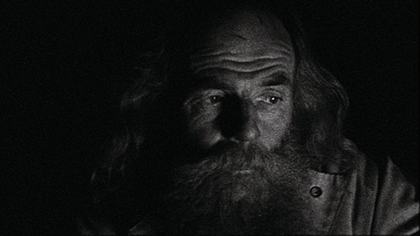
Jake Williams in Two Years at Sea
Jane Giles
Meeting Jake Williams, the subject of Ben River’s beautiful film Two Years at Sea. We were both dressed all in tartan and he wasn’t wearing any socks. A lot chattier than his on-screen persona, Jake told me all about his plan to reconstruct a Victorian fairground ride called The Rib Tickler. I’ll be first in line to buy a ticket.
Mar Diestro-Dópido
Encounters with two warm and enchanting Argentines. The first, a catch up at the Sight & Sound Gala party in Soho with the charmingly diplomatic and always knowledgeable film critic Diego Lerer.
And the second, a very enjoyable interview with the director of Las Acacias, the generous and humble Pablo Giorgelli (who was with his delightful wife, María Austrauskas, the editor of the film) at the Mayfair Hotel. He discussed at length the specificities and extent of Las Acacias’s five-month-old baby’s talent (see my favourite off-screen moment, above).
Nick Bradshaw
Dragging UCLA archivist Ross Lipman across town from the South Bank to Soho as an impromptu guest at the S&S Gala party late one Friday night.
I’d introduced myself beforehand by reminding him that I’d attended a class (on experimental cinema) he’d guest-lectured at my film school a few years ago; he racked his mental archive for all of four seconds before reminding me that, no, I’d signed up for the class but then never attended. (True: it was my last term and I’d had to knuckle down to work.)
- Ross Lipman remembers J.L. Anderson’s ‘Spring Night, Summer Night’ in our Lost and Found column in the forthcoming January 2012 issue of Sight & Sound
Kieron Corless
A toss-up between my interviews with Yorgos Lanthimos and Albert Serra.
Nick James
Hosting the ineffably cool and charming genius Luc and Jean-Pierre Dardenne at the Sight & Sound gala screening of The Kid with a Bike. What they don’t know about cinematic storytelling isn’t worth knowing.
Oh and a last note in appreciation of Sandra Hebron. I really do think that this year’s selection, her last as Creative Director of the LFF, is the best I can remember. She deserves every accolade that will no doubt be showered upon her.
The new new Argentine cinema
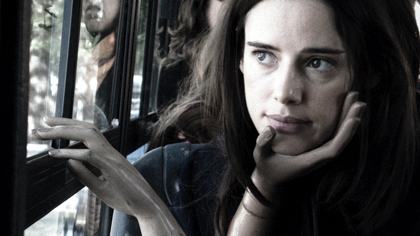
Gustavo Taretto’s Medianeras
Mar Diestro-Dópido, 2 November
Over the last ten years an eclectic group of Argentine directors – figures such as Lucrecia Martel, Pablo Trapero, Martín Rejtman and Lisandro Alonso – have blazed a trail on the festival circuit, in a movement that soon became labelled the ‘New Argentine Cinema’.
After an auspicious beginning, for a while it seemed as if the scene had become stuck in a groove, but over the last three years a younger breed has forged its own identity. “There’s a new generation of filmmakers who are no longer trying to emulate the New Argentine Cinema,” says the London Film Festival’s Spanish-language programmer Maria Delgado, “and are establishing a conversation between different modes of filmmaking.”
From the 120-odd films currently made each year in Argentina, six features by the newer directors were selected for this year’s LFF: Milagros Mumenthaler’s Back to Stay, Laura Citarella’s Ostende, Santiago Mitre’s The Student, Pablo Giorgelli’s Las Acacias, Gustavo Taretto’s Medianeras and Hermes Paralluelo’s Yatasto. The festival also screened a new short by one of the ‘veterans’, Lisandro Alonso. His Untitled (Letter to Serra) is the other half of a ‘Correspondence’ with the Spanish filmmaker Albert Serra, one of a series commissioned by the Centre of Contemporary Art in Barcelona. (I’ve already blogged about the ‘Correspondence’ between Jonas Mekas and José Luis Guerín, another LFF entry.)
Another invitee to this year’s LFF was Diego Lerer, the film editor of Clarín, Argentina’s biggest broadsheet. We’d previously met at the Buenos Aires Festival of Independent Cinema (BAFICI), a key motor of Argentine independent cinema since its own inception in 1999; in London he kindly agreed to give me his own views on what’s going on in Argentina.
For Lerner, one significant development is that this new generation is no longer so dependent on BAFICI to raise funds, nor does it take subsidies from INCA (Argentina’s National Film Institute). Instead these filmmakers tend to finance their films via their own production companies, such as El Pampero Cine – run by Mariano Llinás, director of the groundbreaking Historias Extraordinarias (2008) – or La Unión de los Rios and Pasto Cine, co-producers of The Student.
Another distinctive trait of films such as last year’s LFF hits Castro and They All Lie, or this year’s Ostende and The Student, according to Lerner, is their directors’ strong links with Buenos Aires’ lively independent theatre scene. Alejo Moguillansky (Castro), Matías Piñeiro (They All Lie), Citarella and Mitre have all shown a preference for professional theatre actors over the non-professionals generally favoured by filmmakers like Alonso. Lately, moreover, they’ve begun drafting in back-stage veterans to work as screenwriters, cinematographers and editors.
This now close-knit group of collaborators – still sometimes interchanging positions – gives the films a particular look and feel. Rarefied mise en scène and unusual camera moves, for example, are coupled with a more distanced style of acting which, although it originates in the anti-naturalism of theatre, has elicited some unfavourable comparisons with the nouvelle vague. These filmmakers’ detractors accuse them of being, says Lerer, “rich kids who play at making films as if they were Rivette, Rohmer or Godard. Although there may be some truth in that, the important outcome is that they’ve introduced a change.”
With politics understandably engrained in Argentinians’ DNA, I was surprised when Lerer told me that this cinema is also accused of being insufficiently political, compared to pivotal films of the 1970s and the 80s such as Octavio Getino and Fernando Solanas’ The Hour of the Furnaces (1970) and Luis Puenzo’s The Official History (1985).
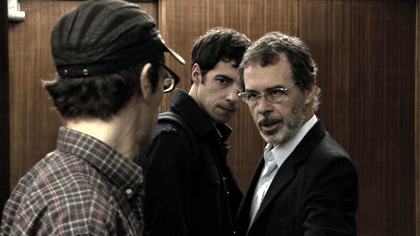
The Student
This notion couldn’t be further from the truth in the case of Mitre’s The Student, whose deliberately indeterminate aesthetics could place it just as easily in the 70s as in the present. Its uncannily precise capturing of Argentina’s political zeitgeist within the world of Buenos Aires university politics has already attracted relatively large numbers at the Argentine box office.
Mitre was the scriptwriter of Pablo Trapero’s Lion’s Den and Carancho, and The Student has a similarly forceful narrative drive – a compensation, perhaps, for audiences unfamiliar with Argentine history and politics, for whom this subject-matter will not be so accessible.
The same can be said of last year’s They All Lie and Castro; but unlike those films, The Student in its varied influences also harks back to such American thrillers of the 70s as All the President’s Men (1976) and Three Days of the Condor (1975) – or, as Mitre himself has suggested, to Jacques Audiard’s 2009 A Prophet.
This type of filmmaking co-exists with that of films like Yatasto and Las Acacias, which are more directly connected to the naturalism favoured by the previous generation. They also tend to be politically charged in their focus on Argentina’s marginalised indigenous people, its other ‘disappeared’ people (after the legions abducted by the dictatorship in the 70s). Often immigrants, these characters pick up the baton from the protagonists of films such as Adrian Caetano’s Bolivia, Pablo Trapero’s Crane World, Lisandro Alonso’s Los muertos, Fantasma and La libertad, and of course Lucrecia Martel’s silent/silenced, observing servants.
Pablo Giorgelli’s exquisite Las Acacias (whose principal actor, Germán de Silva, also features in The Student) is a film in which ostensibly very little happens: an Argentine lorry driver gives a lift to an indigenous woman who’s travelling with her baby to join her family in Buenos Aires. Nevertheless, it exudes such genuine warmth and beauty that it was showered with three awards at this year’s Cannes, and several more since. (An interview with Giorgelli will be published in the January 2012 issue of Sight & Sound).
Not entirely dissimilar to Las Acacias, Alonso’s Untitled (Letter for Serra) is a mesmerising and ultimately poignant 23-minute short, in which Alonso definitively breaks with the naturalism that has characterised most of his films. He even engages with Argentine history far more directly than hitherto, in a scene in which an actor reads aloud a symbolic text about the disappearance of a particular breed of dog at the hands of the colonisers.
If Buenos Aires dominates film production in Argentina, it’s nevertheless worth noting the small but significant film scene emerging in Cordoba, the second city, where Spanish Hermes Paralluelo’s debut feature Yatasto (also lauded at Cannes) was shot.
Paralluelo cleaves to an observational minimalism not unlike that of Alonso, although his pronounced engagement with the particulars of a particular location – he follows the daily lives of rubbish-pickers in Cordoba’s slums – brings him closer to Pedro Costa (albeit with an ample space for humour reminiscent of Jose Luis Guerín’s 2001 En construcción). This places him right at the centre of Argentine independent cinema, where, as Delgado notes, “space has clearly become a character in itself.” Thus the university of Buenos Aires in The Student, the house in Back to Stay, the hotel in Ostende, the woods in Alonso’s ‘letter’, the road in Las Acacias and even Buenos Aires’ architecture in Gustavo Taretto’s subtle, gentle and deadpan romantic comedy Medianeras.
Taretto’s film, a much more commercial enterprise than Yatasto, feels akin to Martín Rejtman’s wonderfully droll Silvia Prieto (1999) or The Magic Gloves (2003). It features Spanish actress Pilar López de Ayala (Guerín’s muse in In The City of Sylvia, 2007) in a story about two isolated young people in our virtually ‘connected’ world. But more interestingly, as Lerer notes, “Medianeras is a film that has struck that difficult-to-achieve balance between having clear commercial aspirations but also not feeling out of place on the festival circuit.”
Women are also securing their fair share of public space in Argentina. Not only do women rule the country (the day I began this post, Cristina Fernández de Kirchner was re-elected as president), but according to Lerer their films constitute 30-40 per cent of the total annual output, making Argentina possibly the country with the largest proportion of women filmmakers in the world.
Lucrecia Martel’s success undoubtedly helped paved the way – since Argentine filmmaking (and film criticism) has traditionally been as male-dominated as elsewhere. But let’s not forget as well the likes of Celina Murga, Paula Hernández, Albertina Carri and Sandra Gugliotta. In this year’s LFF, Milagros Mumenthaler’s Back to Stay and Laura Citarella’s Ostende offer, as Delgado notes, “not a feminist sensibility, but certainly a female sensibility concerned with reworking conventions associated with a particular kind of male filmmaking – whether Antonioni, Rohmer or Hitchcock – and who are doing very interesting things with genre.”
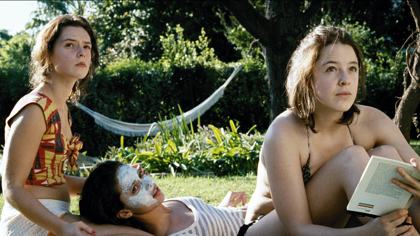
Back to Stay
Having just walked off with Locarno’s Golden Leopard for Back to Stay, as well as its Best Director and Best Actress awards, Mumenthaler’s small, personal and quite beautiful film tells the story of three sisters, Marina (21), Sofía (20) and Violeta (18), who have just lost their grandmother and carer, Alicia. It’s hinted their absent parents are already among the country’s ‘disappeared’.
Mumenthaler’s charming, highly entertaining film captures perfectly the bitchiness and tenderness between the trio. At times it reminded me of Carlo Saura’s 1976 masterly Cría Cuervos (Raise Ravens). But here the main preoccupation is not the space – ie the house – but more precisely the loneliness that permeates this already emptying building. The parents, the grandmother, the girls’ past histories – all are absences effectively mapped by cinematographer Martín Frías, not least in his use of windows and doors (the Spanish title translates as ‘Open Windows and Doors’).
Emptiness also lies at the heart of Laura Citallera’s more genre-oriented Ostende. The action takes place in a genuinely eerie, run-down hotel in the holiday resort village of Ostende, in which Laura, the protagonist, has won a few nights’ free stay during off-season. Citallera’s film calls to mind not only Hitchcock but most tellingly Kubrick, particularly the Overlook Hotel of The Shining (1980) – although it shares with Back to Stay a self-reflexive playfulness that keeps sentimentality (and horror) at bay.
Perhaps the most manifest tendency of this new generation of Argentine filmmakers is their questioning of what appears to be real. This becomes particularly significant in a society whose recent past (dictatorship and economic crisis) rests on ‘disappearance’, deception and the total collapse of appearances. Tellingly, Mumenthaler uses actresses who don’t resemble each other at all, and stealthily raises the question of secrecy around the three sisters’ (and the country’s) past when Sofía insists that Marina could be adopted.
In a further twist, Citarella – who produced Castro and Historias Extraordinarias, and assistant-directed The Student – picks up (albeit in a much more gentle way) the mischievous methods of storytelling that structure all her productions. Nesting stories within stories (per They All Lie) and introducing mistaken identities, all left unresolved, she leaves the viewer confused and disoriented, not unlike James Stewart in Rear Window (1954) or Vertigo (1958).
The virtual world of Medianeras, the uncovered machinations of The Student, the untold history of Back to Stay, the made-up stories of Ostende, the metaphorical re-enactment of history in Alonso’s Untitled, the seemingly documented reality of Yatasto and the apparent naturalism in Las Acacias – all encourage a concerted probing and questioning of what it is we actually see. But as Nietzsche already put it: “There are no facts, only interpretations.”
They live! Treasures from the archive
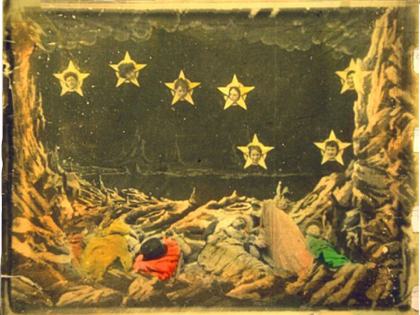
Georges Méliès’s restored Journey to the Moon
James Bell, 1 November
Surrounded by so many attention-grabbing new films, the LFF’s ‘Treasures from the Archive’ programme can sometimes seem like a separate mini-festival all of its own, operating in parallel to the main event, and tucked away from the glare of Leicester Square under Waterloo Bridge at the BFI Southbank. It has its own meet-and-greets, but the stars of the show aren’t usually the visiting cast or directors so much as the archivists and restorers from various film archives across the world, in town to present selections of their past year’s work.
I’ve always found Treasures from the Archives is the first section I turn to when the festival catalogue arrives. This year Clyde Jeavons, the section’s programmer, brought together an enticing range of films that reached right back to the very beginnings of cinema, with a screening of a beautifully restored version of Georges Méliès’s 1902 Journey to the Moon (Voyage dans la lune) – soon, if reports are to be believed, to be paid tribute to in Scorsese’s imminent Hugo 3D.
I didn’t manage to get along to get to every film in the programme, but saw a fair few of them, and single out some personal highlights below.
The programme opened with a screening of Clarence Brown’s 1925 silent The Goose Woman, introduced by the print’s chief restorer, Robert Gitt, and accompanied on piano and flute by Stephen Horne. The film boasts a wonderfully cantankerous performance by Louise Dresser as Mary Holmes, an embittered, forgotten-presumed-dead opera singer whose career had faltered many years previously after she gave birth to an illegitimate son, who she then raised with bitter resentment. (The grown son was played by Jack Pickford, Mary’s brother.)
Drinking her life away in a decrepit house, and surrounded by the geese that provided her nickname, Dresser’s character spots a chance to grab some celebrity when she claims to have seen a murder take place near her property. (The story was inspired by an infamous real-life case from 1922, when a ‘witness’ dubbed ‘The Pig Woman’ concocted a story to win herself attention.) But despite managing to revive her stardom, the plan turns sour when she inadvertently puts her son in the frame, before the inevitable and emotional reconciliation at the end of the film.
Brown – who would become ‘Garbo’s director’, directing her in films such as Flesh and the Devil, A Woman of Affairs and Anna Christie, and would also introduce Elizabeth Taylor to the world in National Velvet – handles the story well, and teases out the humour in his focus on a number of little details like the hiding of a whiskey bottle. Still, it’s Dresser’s performance that lingers in the memory afterwards. As Robert Gitt noted in his introduction, had the Oscars started in 1925 rather than 1927 she would have been a shoo-in for Best Actress.
The feature was preceded by two early Vitaphone sound shorts, both from 1928: The Wild Westerner, a hilarious little skit about a randy old cowboy (Val Harris) trying to chat up a pretty young flapper (Ann Howe), and I Thank You, in which the incredibly eager Eddie White delivers his one-man vaudeville act – a string of ethnic gags and songs, all closed with the slurred sign-off “I thank you!”. According to Gitt, Smith was 26 at the time he made the film, but he looked more like a pimply 15-year old, adding to his winningly awkward screen presence.
Also from the 1920s, but an entirely different proposition, was the Wonderful London screening, which showed new restorations by the BFI National Archive of six of the documentary films made in the ‘Wonderful London’ series by directors Harry B. Parkinson and Frank Miller. Essentially travelogues around the capital in the mid-1920s, these showed the expected sights of the bustling Strand and Piccadilly Circus – but also, fascinatingly, the multi-ethnic Soho of the time, dockers working in the Port of London, and a barge trip up the Regents Canal from Limehouse to Paddington Basin via Kings Cross and Camden Town. It was an uncanny, magical sight to see such familiar places as they once had been.
The films had been restored with their original colour-tinting reinstated. A DVD will hopefully follow, and would be an essential addition to the groaning shelves of books on London’s vanished past. The BFI’s Bryony Dixon warned us in her introduction that some of the films would reveal the racist attitudes of the time, and one sequence of Chinese immigrants in the old Limehouse Chinatown offered particularly offensive intertitles. Neil Brand, accompanying the films on piano, handled such potentially difficult moments with tact and sensitivity.
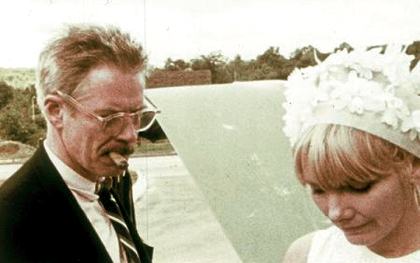
Wanda
My personal highlight of the Treasures section, and of the festival overall, was a revival of a more recent film than most in the programme, Barbara Loden’s still startlingly raw directorial debut Wanda, shot on location in a drab Pennsylvania of sleazy bars, cheap motels and towering slag-heaps in 1969.
Loden herself had started out as a model and actress, though was best known for her marriage to Elia Kazan, and for staring in two of his films – Wild River and Splendor in the Grass, in the latter as Warren Beatty’s sister. As UCLA film archivist Ross Lipman suggested in his introduction to the Wanda screening, it was perhaps that acquaintance that led Beatty the producer to consider her for what ultimately became Faye Dunaway’s part in the 1967 generation-definer Bonnie and Clyde. Loden however refused his offer, and was later critical of the result, reasoning that people who go cross-country robbing and killing simply do not look so pretty, or exude such potent charisma. So it’s tempting to view the very existence of Wanda as something of a reaction; Loden even described it in interviews at the time as “the anti-Bonnie and Clyde”.
Loden herself plays Wanda, a directionless woman who’s pretty much a blank space as a personality. She’s easily manipulated and weak, a naïf. She even welcomes a judge’s decision to deny her access to her child, after which she heads out on the road, eventually taking up with a pathetic, unattractive yet violent middle-aged crook (Michael Higgins) who drags her into his life of petty crime.
Wanda at first seems not to know or care about what he’s up to, and later only offers meek protests when he coerces her into participating in what he thinks will be his big score, asking her to stuff a pillow up her jumper and pretend to be pregnant so as to reassure a bank-manager’s family whose home he’s about to invade, holding them to ransom while he sets off on a hopelessly disorganised and doomed robbery.
This is surely what the great majority of petty crime is like, though the movies seldom admit it: not the crime-as-sex metaphors of Bonnie and Clyde, nor the sleek-professional fantasies of Michael Mann’s Heat, but desperate, unintelligent and character-lacking people falling into bad situations. Loden’s film is absolutely uncompromising, but most refreshingly it doesn’t revel in that lack of compromise; there’s nothing affected, vain or sanctimonious about its roughness.
The film has long had a strong reputation as a cult classic (Jonathan Rosenbaum has cited it as one of the 100 greatest American films, and it’s also a favourite of the LFF’s departing Artistic Director Sandra Hebron), but its influence feels more vital and pervasive today than ever before; Kelly Reichardt’s trip into the bleak heart of contemporary middle-America Wendy and Lucy, for one, owes it an undeniable debt. Here’s hoping Wanda is given a more extensive re-release soon.
Loden’s own career sadly petered out afterwards; Wanda was the one and only feature she would direct, and after making a couple of shorts in 1975 she died young of cancer in 1980.
Similarly uncompromising and original was the American documentary filmmaker and politically radical agitator Emile de Antonio, whose incendiary and landmark 1964 documentary on the televised 1954 Army-McCarthy hearings Point of Order! also screened in the Treasures programme. Ross Lipman introduced it, having again supervised its restoration.
De Antonio later went on to make In The Year of the Pig (1968), the rigorously intelligent, clear-headed polemic about the origins, slow unfurling, and shocking events of the Vietnam war, as well as a number of other incisive documentaries, Millhouse and Underground among them.
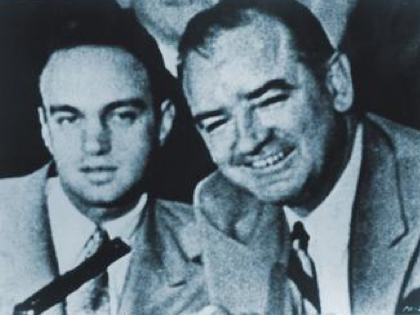
Point of Order!
Like In the Year of the Pig, Point of Order! displays a masterful construction of archive footage, deploying vertical editing in such a way as to leave you in no doubt as to the through-line and polemical power of its argument. What distinguishes it is that Antonio shot no new interviews; the material is all gleaned from the 40 days worth of television broadcasts of the hearings in 1954 – brilliantly edited-down to 97 minutes by editor Robert Duncan – during which McCarthy was gradually exposed to the TV-watching American people as the fanatical and ruthless bully that he was.
Aside from a brief narrated introduction and onscreen text, the rest of the film passes without any ‘voice of God’ interventions. Nevertheless, we are utterly compelled as we watch McCarthy slowly hang himself, and observe tempers fraying, most famously when Army counsel Joseph Welch, challenging Senator McCarthy over his ruthless smearing of a bright and promising young man, whose career he had all but fatally destroyed, rhetorically asks, “Let us not assassinate this man further, Senator. Have you no sense of decency, sir, at long last? Have you left no sense of decency?” (The scene is also cited in George Clooney’s Goodnight, and Good Luck.) That one moment is often held as the final blow to McCarthy’s reputation and a seminal moment in US television history, for it proved the great power the new medium had on swaying public opinion.
In his introduction, Lipman explained how the film arose out of a conversation between de Antonio and Dan Talbot, the owner of the now famous New Yorker Theater cinema and soon-to-be founder of the New Yorker distribution company, which did so much to import and distribute foreign and arthouse cinema in the US from the mid-60s. The pair were discussing the power of television, and both agreed that the 1954 hearings had been the most decisive moment to date in showing the medium’s importance. Their decision to co-produce the film was made partly to provide a film to screen in Talbot’s cinema.
De Antonio is a major documentary filmmaker in need of greater exposure in the UK, and Point of Order!’s pioneering example seems especially current in light of such recent films as Andrei Ujica’s The Autobiography of Nicolae Ceausescu, similarly constructed only out of archive footage.
There was lighter fun to be had on the second Saturday of the festival. First up was an afternoon screening of a restored print of Edward Dmytryk’s Technicolor The Caine Mutiny, whose overblown bluntness and ‘weekend afternoon dad-movie’ clichés were at least offset by Humphrey Bogart’s fine performance as the psychologically troubled Navy Captain Queeg.
Much better was the evening screening of the long-forgotten Cry Danger, a cracking, no-flab crime film from 1951 and the directing debut of former editor Robert Parrish. Dick Powell stars as a man fresh out of a five-year stretch in the slammer for a crime he didn’t commit who sets about uncovering the crooked gang who set him up, while also hooking up with his old hard-drinking buddy Richard Erdman and former-flame Rhonda Fleming.
The whip-smart script by William Bowers had the NFT enraptured from the off – you could feel everyone trying to commit the best wisecracking lines to memory – and it also made fascinating use of its Los Angeles locations, including many scenes shot around the now-demolished Bunker Hill district. (Curiously, Cry Danger wasn’t cited in Thom Andersen’s essay-documentary Los Angeles Plays Itself, which devoted a whole section to films shot in the district.)
I also made it along to fine restorations of Elia Kazan’s epic and deeply autobiographical America, America, with its stunning monochrome cinematography from Haskell Wexler, and to Mizoguchi Kenji’s occasionally sublime – if untypical in its colour-photography – Shin-heike Monogatari (Tales of the Taira Clan).
Both the Archive Gala screening of Miles Mander’s The First Born and Nicholas Ray’s restored We Can’t Go Home Again have already been discussed on this site during the LFF. My biggest regret was missing the World Cinema Foundation’s restoration of Turkish director Omer Lüfti Akad’s 1966 film Law of the Border, reportedly a key film in the New Turkish Cinema movement of the 1960s, and exactly the kind of historical revival that makes the LFF’s Treasures programme so essential: revealing the great untapped and still uncharted depths of world cinema history, while also reminding us how precarious the survival of even the most celebrated films can still be.
Across the universe: Braden King’s HERE
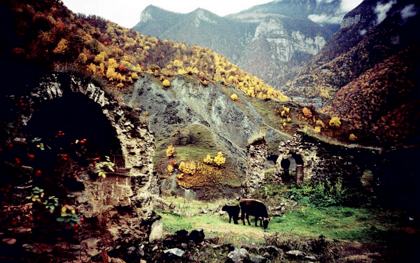
Davina Quinlivan, 30 October
Following its premiere at this year’s Sundance Film Festival, Braden King’s HERE was one of the last films to be screened on the final day of the LFF, followed by a spirited Q&A with the director himself. King’s earlier, lyrical documentary Dutch Harbour: Where the Sea Breaks Its Back (1998) officially showcased his directorial vision, while his iconographic music videos for Sonic Youth, Will Oldham and the Dirty Three have served to establish his particular blend of photography, non-narrative filmmaking and visual art.
An assured fiction-feature debut, HERE is not only a synthesis of his previous work, but a bold endeavour to make a film inspired by a love of map-making and the mythology of exploration. Deliberately playing with style and genre conventions, it sets outs to map the path of love between Gadarine (Lubna Azabal), an ex-patriate Armenian and artistic photographer, and Will (Ben Foster), a Californian cartographer, as they voyage into unknown and unmapped territory in Armenia.
At the film’s core is the concept of map-making itself, or rather film experience as a kind of intimate encounter with another’s ‘map’ of time and space. Cutting across the axis of the film’s romantic drama are non-narrative intervals comprised of over-exposed, jerky, light-emblazoned images: colour-saturated polaroids here, views of Earth from outer space there. These experimental interludes are navigated and narrated by Peter Coyote, anchoring the film historically and scientifically with tales of ancient voyages and the creation of the world’s first maps.
HERE’s explicit investment in the theme of map-making, dreams and the interior lives of its protagonists may strike some viewers as exasperating whimsy (not least during those Coyote-voiced sections), but in many ways this film is an antidote to current cinema’s fascination with paranoid protagonists and detonated, hopeless landscapes. While the film is conceptually dense, the story that unfolds is subtle, sensuous and above all recognisable, in the sense that it authentically recalls what it is like to travel and be caught up in an adventure.
Crossing into the world of HERE, a line of prose appears on screen: “The story is sleeping. The story dreams.” Anticipating the ‘dream life’ of the film, as King was keen to point out during the Q&A, Here seems to knowingly channel Shakespeare’s line “We are such stuff / As dreams are made on; and our little life / is rounded with a sleep.”
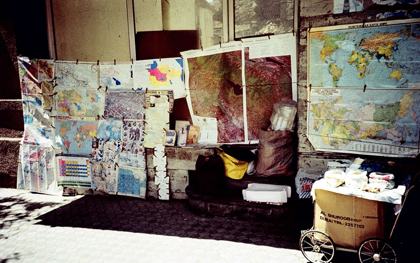
This comparison between dreaming and the cinema is not a new one, but King’s methodology – experimental moving-image art, the mythic and the closely observed love affair – is genuinely rousing, imaginative and sensitively attuned to the technological potential of today’s cinema and its affirming qualities. (Von Trier’s images of the Earth in Melancholia are powerful for similar reasons.)
While much of HERE’s strength lies in its assured configuration of image and music (supplied by Michael Krassner and the Boxhead Ensemble), together with the understated performances and palpable chemistry of its two leads, King’s film- / map-making fashions an atlas out of memory and emotion in a way that makes clear the connections between geographic exploration and cinema’s unique invitation to explore everything and everyone.
Caught within the dream King sets in motion are the shadows of several other films. While a male photographer visits the ruins of churches in Armenia with his wife in Atom Egoyan’s Calendar (1993), Azabal’s Gadarine is not only a photographer but also a sort of female translator, much like Arsinée Khanjian in Egoyan’s film. Indeed, one sequence features Gadarine visiting an ancient Armenian church, filmed by British cinematographer Lol Crawley through blades of swaying grass, recalling one of the key textural motifs of Egoyan’s film. Certainly, King’s film works as an interesting counterpart to Calendar, a film more deliberately focused on questions of erotic fascination and the exotic.
There are also intertextual moments in HERE which seem to pay homage to the Armenian filmmaker Sergei Parajanov and his obsession with stillness, the wind and nature. (The crew also filmed within the Parajanov museum for the ‘transmedia’ art installation project King has also developed as a continuation of HERE’s visual language.)
Towards the end of the film, deep within the unchartered territory of the Nagorno-Karabagh region, Gadarine is seen wrapping her arms around Will’s body as he gazes at the beauty of the rural landscape they have found together. The camera tracks around the couple before insinuating itself within their embrace. Then Gadarine is seen to walk backwards, her hands slipping over, then away from Will’s chest. Beneath the surface charm and wonder of King’s poetic images is an acute awareness of the fact that we are all alone, no matter all our wildest endeavours to seek out others and to map them onto our own small islands.
The lost Left: My Back Page
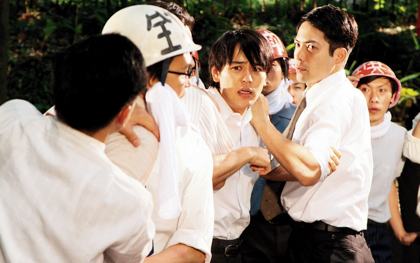
Frances Morgan, 31 October
Tokyo, the turbulent late 1960s. A young man, played by Kenichi Matsuyama, is at the heart of an emotionally charged narrative about youthful identity, named after an iconic pop song of the period. But lest that sound a little too familiar, it should be noted that My Back Page’s similarities with Norwegian Wood pretty much end there. Where Tran Anh Hung’s adaptation of the Murukami novel focused on the psychological conflicts of its beautiful young protagonists, with the Zenkyoto student riots and occupations as a bewildering background noise, My Back Page, adapted by Nobuhiro Yamashita from an autobiographical novel by Saburo Kawamoto, is all about how the personal and political inform one another, in a gripping story about ethics, betrayal and idealism.
Matsuyama plays Umeyama, a volatile young activist operating under a false name, and the film’s pivotal character but not its hero. We see events mostly through the eyes of young reporter Sawada (Satoshi Tsumabuki), who’s increasingly drawn into his orbit not only because he could get a major scoop but also because he’s forming some radical ideas of his own, the culmination of an adolescence spent during one of Japan’s most turbulent political periods. He’s tired of doing sentimental ‘undercover’ stories about poverty, and wants to be where the action is. As Umeyama urges more than once, the two of them together, as activist and reporter, could be “the real thing”.
Umeyama’s grand plans for revolution with his laughably amateur ‘Sehiko Army’ rather predictably spill over into real violence, although perhaps not in the way he might have hoped; and Sawada’s belief system, not to mention his fledging career, are threatened. Their relationship is the emotional crux of the film, but My Back Page excels in providing a context to that relationship, helping us to understand that these aren’t just angry young men (and women – Umeyama’s group includes two females) out to prove themselves, but that their actions come at the end of a long decade of protest in Japan, sparked in the early 1960s by renewal of the US-Japan Security Treaty (ANPO).
The notion that the Left has lost its way and a new, more chaotic brand of activism is in the air is vocalised by two strong supporting characters – veteran journalist Nakahira and charismatic older outlaw Maebashi (an intense Takaya Yamauchi, espousing the need for “scoundrels… fighting alone”) – and while some prior knowledge of the ANPO saga is probably helpful, Yamashita does a great job of disseminating historical information within this coming-of-age story.
He doesn’t overplay the period references either: clothes and décor are understated and a little dingy, and a scene where Umeyama and Sawada shyly sing Credence Clearwater Revival’s ‘Have You Ever Seen the Rain?’ is one of the few pop moments in the film. (A modern, rocky Japanese and English version of the Dylan song of the title is also belted out over the closing credits.)
Compared to Norwegian Wood’s musical panache – with its Jonny Greenwood score and well-placed Can tracks – and visual elegance, My Back Page is far less cool, and enjoyably so. The actors too convey youthful awkwardness with an unforced charm: the kids of the Sehiko Army are gauche, the young women far from glamorous, and Tsumabuki’s worried-looking Sawada is certainly no self-assured leading man or tragic hero.
Matsuyama can’t help but bring a nervy charisma to his role, but he’s anomalous and dangerous. Romance drives the story – it drives the boys’ friendship, Sawada’s ambitions, the young activists, and perhaps much of the wider movement around them – but My Back Page is too tempered by a messy, complex, rueful empathy to be entirely a romantic film.
In a year where we’ve seen the idea of Japan in the 1960s and 70s revisited anew on film, with not only Norwegian Wood’s heightened, poetic evocation of the era but also BFI’s Shinkjuku Diaries season of rare experimental Japanese cinema, it offers another, compelling side to the story.
« Week two
